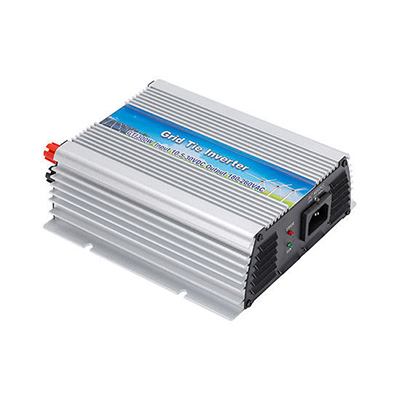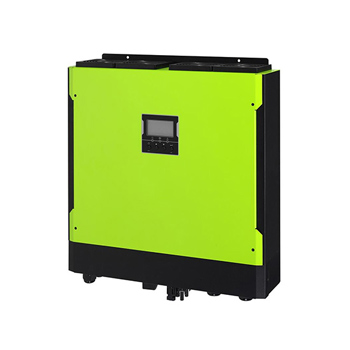With the increasing global emphasis on renewable energy, solar energy, as one of the most popular clean energy sources, is constantly advancing and improving its application technology. In solar power systems, inverters are the key components responsible for converting the DC power generated by solar panels into AC power to meet the needs of domestic, commercial, and even industrial power consumption. Among them, hybrid inverters and on-grid inverters are the two mainstream types, each with unique advantages and applicable scenarios.
So what is the difference between hybrid inverters and on-grid inverters? Inverter Online Shop will provide readers with a comprehensive and in-depth understanding of the differences between these two types of inverters, their functions, application scenarios, selection factors, and their respective advantages from a professional point of view.
Essential Differences in Inverter Functions
On-Grid inverter: On-grid inverters, as the name suggests, have a core function of efficiently converting DC power to AC power and ensuring that the voltage, frequency, and phase are kept in sync with that of the public power grid to achieve seamless connectivity. MTTP (Maximum Power Point Tracking) technology is widely used in this process, aiming to maximize the power generation efficiency of solar panels. Grid-connected inverters do not have an energy storage function, and all power that is not used instantly is delivered directly to the grid, where users can enjoy subsidies or tariff discounts according to grid policy.
Hybrid inverter: The hybrid inverter, on the other hand, is an advanced device that integrates both grid-connected and off-grid functions. It not only performs all the functions of a grid-connected inverter, i.e. efficiently converting DC to AC for grid connection, but is also equipped with an additional energy storage management system that intelligently controls the charging and discharging process of the battery. During normal power supply, the hybrid inverter prioritizes the use of solar power and may store excess power in the batteries; in the event of a grid failure or blackout, the inverter immediately switches to off-grid mode and uses the battery storage to supply power to the loads, ensuring continuity of power consumption. Therefore, hybrid inverters essentially act as the ‘smart heart’ of a household or small-scale power system, with the dual roles of energy production and emergency backup.
Different Functions and Application Scenarios
Application scenarios of grid-tied inverters: Grid-tied inverters are most suitable for areas with stable power grids, large power demand, and the desire to maximize the use of solar subsidies. In these scenarios, users can make full use of the excess power generated during the daytime with sufficient sunlight by installing grid-connected inverters, transmitting it to the grid, and obtaining economic returns. At the same time, since there is no need to configure energy storage equipment, the initial investment is relatively low, which is suitable for large-scale distributed power generation projects.
Application scenarios of hybrid inverters: The application field of hybrid inverters is more extensive, especially in areas where the power grid is unstable, the power supply is insufficient, or users have special requirements for power reliability. It can not only provide green energy when the power grid is normal but also serve as an emergency backup power supply when the power grid fails to ensure uninterrupted power supply for important loads. In addition, for users who want to achieve energy self-sufficiency and reduce dependence on the external power grid, hybrid inverters combined with appropriate energy storage configurations can build a complete microgrid system to further enhance the flexibility and autonomy of energy use.
Different Application Factors to Consider When Choosing an Inverter
- Installation environment: Grid-connected inverters need to ensure access to a stable and reliable power grid environment; hybrid inverters need to consider both grid access conditions and the installation space and safety of the energy storage system.
- Energy demand: Scenarios with high energy demand and stable power grid are suitable for grid-connected inverters; while scenarios with large fluctuations in energy demand and high requirements for power supply reliability are more suitable for hybrid inverters.
- Investment cost: The initial investment of the grid-connected inverter is low, but it has no energy storage function; although the initial investment of the hybrid inverter is higher, in the long run, the comprehensive benefits of combining the energy storage system may be more significant.
- Reliability: Hybrid inverters have higher reliability due to their off-grid function and ability to provide emergency power when the grid fails.
- Maintenance cost: Hybrid inverters require regular maintenance of the energy storage system, and the maintenance cost is relatively high; grid-connected inverters are relatively simple, and the maintenance cost is low.
Comprehensive Analysis of Respective Advantages
Advantages of Grid-Connected Inverters:
- Economical and efficient: low initial investment and maintenance costs, suitable for large-scale applications.
- Environmental protection and energy saving: directly provide clean energy for the power grid and promote sustainable development.
- Policy incentives: Most regional governments provide subsidies or preferential electricity rates for grid-connected power generation to reduce user costs.
Advantages of Hybrid Inverters:
- Highly self-sufficient: Combined with energy storage systems, it can achieve an independent closed loop of energy production and consumption.
- Emergency backup: Provide uninterrupted power supply when the power grid fails to ensure the operation of key loads.
- Flexible dispatch: Intelligently adjust power supply according to power grid conditions and user needs to improve energy utilization efficiency.
- Long-term benefits: Although the initial investment is high, in the long term, it can bring significant economic and social benefits by reducing dependence on external power grids and reducing power outage losses.
Hybrid inverters and on-grid inverters have their own merits, and users should make comprehensive considerations according to their actual situation and needs when choosing. With the advancement of technology and further cost reduction, these two types of inverters are expected to play an important role in more fields in the future, and jointly promote the prosperous development of the solar power industry.
